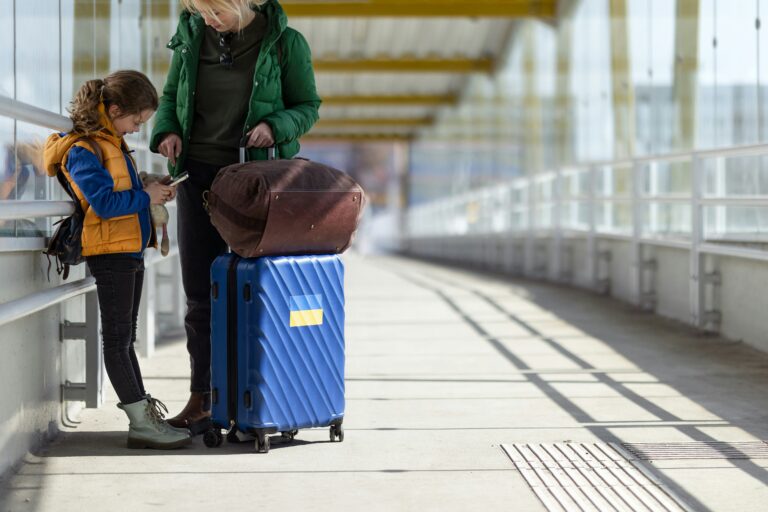Smart travellers are using this classification trick to avoid expensive charges
Key Points:
- Travel expert shares clever money-saving hack that helps travellers avoid costly fees when flying with adventure and camping equipment
- Expert explains how correctly labelling your gear as ‘sports equipment’ rather than oversized luggage can significantly reduce airline charges
- Expert shows how different airlines categorise adventure gear and where passengers are needlessly overpaying
Packing for an adventure holiday often comes with an unwelcome surprise at the airport check-in desk – hefty charges for that essential camping gear or outdoor equipment you can’t leave behind. These unexpected fees can add hundreds to your holiday costs before you’ve even taken off.
However, one travel expert claims there’s a little-known loophole that could save holidaymakers from these expensive charges.
“Many travellers don’t realise they’re overpaying for their adventure gear,” explains Andy Halliday, outdoor specialist at Lexrope, a UK-based company specialising in outdoor camping gear and accessories. “There’s actually a simple trick that can save you significant money when flying with bulky equipment.”
This money-saving hack involves how you classify your gear when checking in – and it could mean the difference between paying premium oversized luggage rates and much lower fees, or sometimes no extra charges at all.
The Airline Baggage Fee Problem
Anyone who’s tried to bring camping equipment, hiking gear, or outdoor accessories on a flight knows the sinking feeling when the check-in agent announces an extra £50-100 charge per item. These fees can quickly turn a budget-friendly adventure into an expensive ordeal.
Major airlines have different policies for oversized luggage, with some charging based on weight and others on dimensions. British Airways, for example, charges £20-65 for items weighing over 23kg and £65 for those in excess of 32kg, while Ryanair’s fees for oversized items can reach £75 per flight segment.
“These charges aren’t just annoying – they’re often unnecessarily steep,” says Halliday. “Especially when you consider that the same airlines frequently offer special rates for certain categories of equipment.”
The Money-Saving Trick Airlines Don’t Advertise
The key to avoiding these excessive fees lies in how you categorise your gear. Rather than allowing your camping or adventure equipment to be labelled as “oversized luggage,” Halliday recommends declaring it as “sports equipment” instead.
“Many airlines have special allowances and discounted rates specifically for sporting goods,” Halliday explains. “This includes items like golf clubs, ski equipment, and bicycles – but the definition of ‘sports equipment’ is often broader than travellers realise.”
This simple change in classification can result in substantial savings. For example, EasyJet charges £48 for oversized bags but offers a fixed £37 online fee for small sports equipment up to 20kg and £45 online for large equipment. Even premium carriers like Virgin Atlantic and Emirates have dedicated sports equipment policies with more generous allowances than their standard baggage rules.
How to Make This Trick Work for You
To take advantage of this money-saving loophole, Halliday offers several practical tips:
1. Pack strategically
Use soft, airline-approved cases that are clearly labelled as sports gear. “The packaging matters,” says Halliday. “A standard suitcase will always be treated as standard luggage, but a dedicated ski bag or similar sports container sends a clear message about how your equipment should be categorised.”
2. Know what qualifies as sports equipment
Different airlines have different lists of what counts as sports gear, but many include:
- Camping equipment
- Hiking poles
- Fishing rods
- Climbing gear
- Kayaking paddles
- Surfboards
- Snowboards and ski equipment
3. Declare it properly at check-in
“When checking in, specifically refer to your items as sports equipment rather than just ‘big bags,’” advises Halliday. “This verbal cue helps ensure the check-in agent applies the correct fee structure.”
4. Check airline policies before booking
Some airlines are more generous than others regarding sports equipment. “Before booking your flight, compare the sports equipment policies of different carriers,” Halliday suggests. “Sometimes paying slightly more for the base fare with an airline that has better sports equipment allowances can save you money overall.”
5. Consider airline partnerships
“Some airlines have agreements with adventure tour operators and outdoor retailers,” notes Halliday. “If you’ve purchased your equipment from a partner company or booked an adventure tour, the airline might waive fees entirely.”
Andy Halliday, outdoor specialist at Lexrope, commented:
“Most holidaymakers simply accept the fees quoted at check-in without questioning whether there’s a more cost-effective option. Airlines aren’t obligated to suggest alternatives that might save you money – that’s on you as a traveller to know.
“The difference between declaring something as ‘oversized luggage’ versus ‘sports equipment’ can be significant. Customers can save over £100 on a single trip just by understanding this distinction. It’s completely within airline policies – you’re just ensuring your gear is categorised correctly.
“This approach works because airline baggage systems are largely automated and follow predefined categories. Check-in agents don’t typically have the authority to charge whatever they want – they follow set procedures for categorising luggage. By understanding these categories, you can legally fit into the more favourable ‘sports equipment’ classification.
“This approach is particularly useful because it works across most major airlines. Whether you’re flying with a budget carrier or a premium airline, most have special provisions for sports equipment that are more generous than their standard luggage allowances. With the rising cost of travel, these small savings can make adventure holidays much more accessible.”
